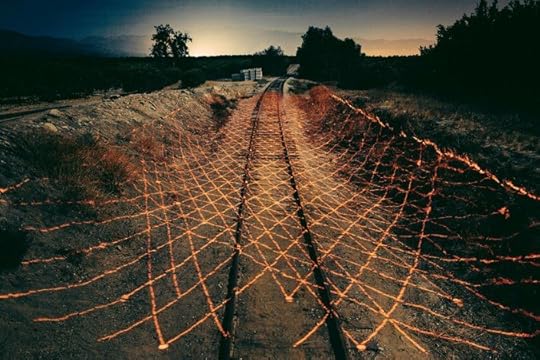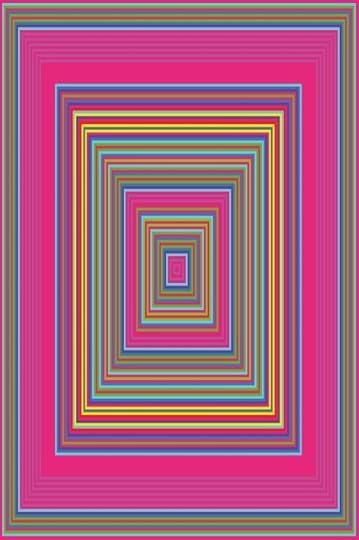Art Lovers discussion
STEAM Power
>
Can fine art be made of or from Technology?
date newest »
newest »
 newest »
newest »
message 1:
by
Heather
(new)
Nov 21, 2016 04:57AM
 Your thoughts?
Your thoughts?
reply
|
flag
 I'm not sure if "fine art" would be the correct relation to the following article as to how art can be made of technology. But I found this very interest. It creates images and music, both using technology.
I'm not sure if "fine art" would be the correct relation to the following article as to how art can be made of technology. But I found this very interest. It creates images and music, both using technology.Some phrases and examples of how various 'scientist' using different forms of technology to create artistic and aestetic pictures.
Art and Technology
...with a sample device provided by an SEM manufacturer, I was able to explore macrophotography...with this technology I could also add my own aesthetic considerations and imagination."
As the train moved slowly through the terrain, the laser drew a single line of pixels across the landscape, a line that kept changing and updating. The laser projections left visual echoes on the surroundings, which we were able to capture through long-exposure photography... I’d like to explore setting up a live music performance on a train, and projecting a visualization of that music onto the landscape so that you could actually see the music evolving and unfolding as the train moved — a visual history.

The relationship between color and sound is not arbitrary; the notes that I hear relate to the frequencies of light. If we could hear the frequency of red for example, we would hear a note between F and F sharp."

For example, Beethoven "Fur Elise".
Beethoven’s “Für Elise” comes out to be a very purple and pink composition.
More: http://www.nytimes.com/2013/11/28/opi...
 Fascinating -- maybe this isn't "fine art" per se, but it's definitely art made from technology.
Fascinating -- maybe this isn't "fine art" per se, but it's definitely art made from technology. The thought that comes to mind for me is around photography as an obvious example. When digital photography and Photoshop-as-darkroom first appeared on the visual arts scene, there was huge resistance to the idea that the results could be considered art at all.
A quick look at the photographs that are derived from images taken by the Hubble Space Telescope definitively put to rest the idea that such images couldn't be considered art at all -- they got used in office decor, home decor, as computer screen decoration, in advertising, etc. And there's no traditional photo darkroom aboard the Hubble. https://www.spacetelescope.org/images/
Now there are college courses available to teach young artists how to make "concept art" for use in video games and movies - and the college courses require that the students entering the courses have or acquire strong handmade-arts skills. A concept artist, by the time they reach entry-level career status, has a wide range of visual arts skills, and is capable of producing an equally wide range of artworks. http://conceptartworld.com/
Digital artists practice and play in forums such as DeviantArt (http://www.deviantart.com/) and I would argue that the results are indeed art -- strange art sometimes, occasionally outrageous art, but at bottom, art.
 We haven't posted here for a little while, but I'm posting right after the comment Ruth made "Technology is merely a tool. What you do with it depends on you. This TED talk is just that, what one photographer catches from his use of science and technology.
We haven't posted here for a little while, but I'm posting right after the comment Ruth made "Technology is merely a tool. What you do with it depends on you. This TED talk is just that, what one photographer catches from his use of science and technology.Swiss artist and photographer Fabian Oefner is on a mission to make eye-catching art from everyday science. In this charming talk, he shows off some recent psychedelic images, including photographs of crystals as they interact with soundwaves. And, in a live demo, he shows what really happens when you mix paint with magnetic liquid--or when you set fire to whiskey.
https://www.ted.com/talks/fabian_oefn...
 I'm still a little confused about why 90% of the artists I know tell me early in conversation that they are "non-technical". When you consider that technology is ALL about creating better tools, and that artists are the epitome of skilled tool users, it is striking to me that artists could even begin to think that they are non-technical compared to the rest of the population.
I'm still a little confused about why 90% of the artists I know tell me early in conversation that they are "non-technical". When you consider that technology is ALL about creating better tools, and that artists are the epitome of skilled tool users, it is striking to me that artists could even begin to think that they are non-technical compared to the rest of the population.There's a reason why STEM (Science, Technology, Engineering, Mathematics) seems to be an incomplete model for a career: the more accurate model for what humans do is STEAM (Arts have to be in there somewhere, or people stay away in droves).
Fabian has been walking the talk for several years now: I remember using his TED talk to connect with grade 5 & 6 elementary school students around today's art world more than six years ago, and they were utterly enthralled. And there are many more artists out there doing this kind of thing.
A visual artist in British Columbia Canada who did a massive project on how agriculture and urban living intersect and interact, using both traditional photography and Google's 360 cameras to document and distribute the inside of a poultry farm that operates within the boundaries of the city of Surrey, for example.
A woman who makes gigantic, kinetic and beautiful sculptures of ephemeral-looking netting placed between skyscrapers or in urban parks, and whose grace is activated by the winds.
Fabian.
And if you want stunning geometrical and coloured depictions of things, visit your handiest science conference and look at the display and exhibit space there, created by the participants. Amazing, beautiful art created by people who don't consider themselves artists at all.
Ah, STEAM! How I love thee! (Does that make me a STEAM punk, Mom?)



